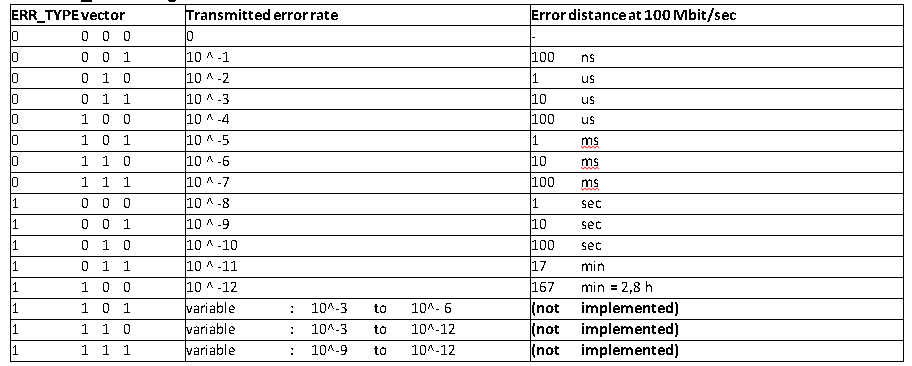“In analog world the standard test message is the sine wave, followed by the two-tone signal for more rigorous tests. The property being optimized is generally signal-to-noise ratio (SNR). Speech is interesting, but does not lend itself easily to mathematical analysis, or measurement.
ln digital world a binary sequence, with a known pattern of ‘ 1’ and ‘0’ , i s common . It i s more common to measure Bit error rates (BER) than SNR, and this is simplified by the fact that known binary sequences are easy to generate and reproduce. A common sequence is the pseudo random binary sequence.”
**********************************************************************************************************************************************************
“A PRBS (Pseudo Random Binary Sequence) is a binary PN (Pseudo-Noise) signal. The sequence of binary 1’s and 0’s exhibits certain randomness and auto-correlation properties.Bit-sequences like PRBS are used for testing transmission lines and transmission equipment because of their randomness properties.Simple bit-sequences are used to test the DC compatibility of transmission lines and transmission equipment.”
**********************************************************************************************************************************************************
Pseudo-Random-Bit-Sequence (PRBS) is used to simulate random data for transmission across the link.The different types of PRBS and the suggested data-rates for the different PRBS types are described in the ITU-T standards O.150, O.151, O.152 and O.153.In order to properly simulate real traffic, a pseudo-random bit sequence (PRBS) is also used. The rate of the PRBS can range between 2^-9 and 2^-31. Typically, for higher-bit-rate devices, a high-rate PBRS pattern is preferable so that the device under test is effectively stressed
**********************************************************************************************************************************************************
Bit-error measurements are an important means of assessing the performance of digital transmission. It is necessary to specify reproducible test sequences that simulate real traffic as closely as possible. Reproducible test sequences are also a prerequisite to perform end-to-end measurement. Pseudo-random bit sequences (PRBS) with lengths of 2n – 1 bits are the most common solution to this problem.

PRBS bit-pattern are generated in a linear feed-back shift-register. This is a shift-register with a xored– feedback of the output-values of specific flip-flops to the input of the first flip-flop.2*X (X = PRBS shift register length).
Example : PRBS-Generation of the sequence 2^9 -1 :

PRBS_TYPE

ERROR TYPE

Note:(PRBS) of order 31 (PRBS31), which is the inverted bit stream.
G(x) = 1 + x28 + x31 (1)
The advantage of using a PRBS pattern for BER testing is that it is a deterministic signal with properties similar to those of a random signal for the link , i. e. of white noise.
Bit error counting
Whereas a mask of the bit errors in the stream can be created by ANDing the received bytes after coalescing them with the locally generated PRBS31 pattern, counting the number of bits set in this mask in order to calculate the BER is a bit tricky. So we need to follow this

Typical links are designed for BERs better than 10-12
Unlock Premium Content
Join over 400K+ optical network professionals worldwide. Access premium courses, advanced engineering tools, and exclusive industry insights.
Already have an account? Log in here




